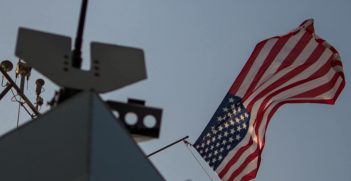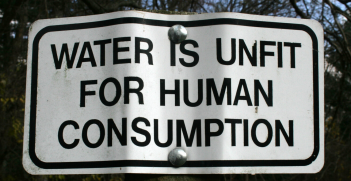Where There’s Smoke, There’s Atomic Fire

Last weekend’s North Korean missile test came after a series of nuclear weapons-related actions and announcements by the new US administration. What comes next could shape the strategic climate for years to come.
On Wednesday last week the US and Japan successfully tested the interception of a medium-range ballistic missile in space. On Thursday Air Force Chief of Staff Gen. David Goldfein told reporters the US will conduct a nuclear posture review “this spring” and just as President Abe and President Trump were sitting down to dinner in Florida, North Korea test fired a ballistic missile.
Within moments of Donald Trump’s inauguration, the White House posted on its website that the administration intends to develop a “state-of-the-art” missile defence system. Having formed a persistent theme throughout the first few weeks of Trump’s presidency, nuclear weapons will now demand attention from leaders around the world.
On 22 January, a US Atlas 5 rocket launched SBIRS GEO-3, a space-based infrared surveillance satellite. GEO-1 and GEO-2 were launched in 2011 and 2013 respectively, with all three intended for missile warning and counter-defence.
When Trump signed an executive order on 27 January calling for a review of the US military, it specifically asked for a nuclear posture review. This review will directly follow on from an unpublished Defense Science Review Board report in December last year that advised the US move towards a greater number of low-yield weapons in order to offer a “tailored nuclear option for limited use”.
This review comes just as the US embarks on a US$1 trillion (AU$1.3 trillion) nuclear modernisation program. While this money is currently slated for the acquisition and upgrade of submarines, bombers, missiles, bombs and warheads, the posture review could alter the direction of these funds. Potentially bequeathing the US and the world with a Trump administration nuclear force structure.
Notably, the US-Japan missile interception test last week was carefully aligned with US Defense Secretary James Mattis’ trip to South Korea and Japan. A trip during which he said the US would respond to North Korean nuclear use “with an effective and overwhelming response”.
China, Russia and Pakistan all tested missiles in January and by extension this rhetoric arguably applies to them as much as to North Korea. China’s missile test boasted ‘multiple independently targetable re-entry vehicles’ (MIRVs) with 10 warheads and is indicative that Chinese nuclear warhead stockpiles may be orders of magnitude larger than previously estimated. It also indicates that China may be considering its own nuclear posture.
Mattis’ trip was in part dedicated to ensuring the Terminal High Altitude Area Defense (THAAD) system slated for deployment to South Korea goes ahead later this year. THAAD’s potential deployment has been causing regional consternation, with both China and Russia reportedly agreeing on countermeasures to the deployment. And even though the South Korean Defence Ministry said it would be deployed “as soon as possible”, that was in July 2016.
Until last year, South Korea had been reticent to agree to the deployment for fear of upsetting China, opting for the Patriot system instead, which intercepts missiles at lower altitudes. While the THAAD system is ostensibly for defence from North Korea, Chinese Foreign Minister Wang Yi has said THAAD “has undermined the foundation for our bilateral trust.”
Though China and Russia may regard the North Korean threat as a pretext for the deployment of THAAD, on 1 January Kim Jong Un said North Korea was at “the final stage in preparations to test-launch” an intercontinental ballistic missile (ICBM). On 2 January Trump tweeted “It won’t happen!”. This tweet has been regarded as a ‘red line’ and will need to be backed up with commensurate action to ensure the Trump administration—including all associated twitter accounts—are not internationally regarded as nothing more than a loudhailer of hollow threats.
To that end, the administration’s response to North Korea’s missile test on Sunday will be closely watched. While it wasn’t an ICBM test, it was likely testing a propulsion system for an ICBM. Washington has said that they will opt for a calibrated response to avoid escalating tensions. Importantly, the exact nature of a response will set international expectations for how the US will handle a North Korean ICBM test.
North Korea’s ICBM test, should it happen, will be a major test for the US administration. Each successful test by North Korea substantially matures the country’s capability. Stopping North Korea from collecting the data of a successful test will be almost as important as how the Trump administration reacts. To this end, the US-Japan missile interception last week should be considered an essential component of the comments from Mattis.
Though the SM-3, the missile used in the interception test last week, isn’t ready for deployment, the THAAD system is. The deployment of which will substantially change the risk calculus of every nuclear state in the region. China may reconsider its “no-first-use” policy, a definite problem on its own but more so with 10 warhead MIRVs taken into account. Weapons of this calibre threaten to overwhelm the current US missile defence systems.
There’s seemingly no sign at the moment that China will move to a “launch-on-warning” policy, but it has been reported that low-level analysts, military scholars and media commentators in China are calling for an expanded arsenal. China’s response to THAAD, should it be deployed, is just one variable among many.
The result of Trump’s nuclear posture review will necessarily cause nuclear and non-nuclear nations alike to recalibrate their strategies. Whether or not to deploy the SM-3 to Poland is just one choice that will need to be reviewed. The system should be ready for deployment in 2018 and just last week Jaroslaw Kaczynski, chairman of Poland’s ruling Law and Justice Party, called for the European Union to become a nuclear superpower—a clear indicator of a nascent appetite for deployment.
The man who will finalise the new US nuclear posture was last week reported to pause mid-phone call with Putin and ask an aide what the New START treaty was. On a positive note, at least he asked. But regrettably, Trump denounced the deal as being in Russia’s favour and while Putin was offering to extend the treaty the opportunity was lost.
Trump’s term in office will undoubtedly reshape the global nuclear order and if January and February of this year are anything to go by, that reshaping will happen much sooner than anticipated. It will be Trump who decides what an “effective and overwhelming response” actually looks like, but that choice will fundamentally rebalance the strategic climate in which we live.
Thom Dixon is a councillor with AIIA NSW and a young leader with the Pacific Forum CSIS’s Young Leaders Program. He works as project officer in the office of the deputy vice-chancellor at Macquarie University.
This article is published under a Creative Commons Licence and may be republished with attribution.





